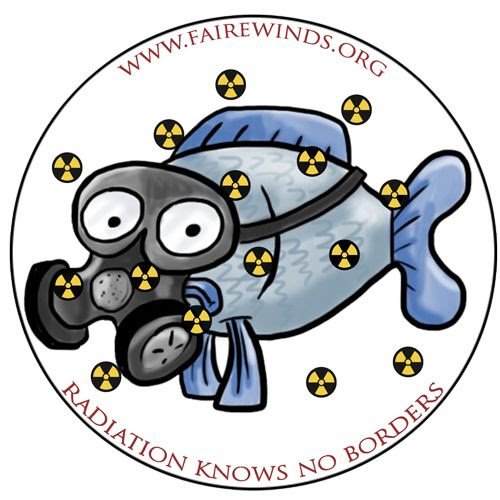Our Oceans Are Not Sewers
/Reckless endangerment of the world's oceans and seas by governmental agencies and industry continues
By The Fairewinds Crew
Whether it's plastic, mercury, or radioactivity, the entire world has treated our planet’s oceans as its sewage dump. As if we need more proof that Radioactivity Knows No Borders, three recent events discussed below prove the reality of our statements.
The global authorities that regulate atomic power and nuclear waste often assure us that there are no significant risks to communities near radioactive disasters and operating facilities. Yet, communities must determine the actual dangers themselves. The Fairewinds Crew is ready to help create more community-based citizen-scientists to help communities do so. We need your help to reach out to at-risk communities to meet this mission. So please donate today to Fairewinds Energy Education, and share this Demystifying Nuclear Power Blog post with your family and friends!
First, long-term members of the Fairewinds community will remember that in 2015, Arnie Gundersen traveled to Cumbria, adjacent to the Irish Sea in the UK. Fairewinds went to the UK to work with citizen scientists collecting local samples. When Fairewinds testified at the House of Commons, Arnie detailed radioactive contamination emanating from the Sellafield reprocessing plant, Chernobyl, and the 1957 Windscale nuclear disaster. He was sampling in the summer resort community of Seascale near the Sellafield Nuclear Site along the Irish Sea, where the beaches are frequented by families with children.
Unfortunately, the nuclear power and weapons industries have continued to use the Irish Sea as a dumping ground for British atomic waste since the 1950s.
Thanks to the Unfriending the Atom organization and program, we recently found out that Arnie’s winter coat has plutonium in its pockets – even after being dry cleaned from travel abroad. While working with citizen scientists, he wore this coat to collect samples on public open-space estuary-land. Also, view the whole Unfriending the Atom Zoo for more images of “exotic data from mundane objects”.
Arnie’s time sampling near Sellafield is part of our worldwide campaign to protect families and communities from the devasting and lasting impact of radiation exposure. Currently, we have begun the process of researching and documenting our Irish Sea data for another peer-reviewed journal article. When this paper has been accepted by a publisher, we will share this open and accessible data for our community-volunteer citizen-scientists and the public.
While our scientific analysis is openly provided to communities at no charge once published, such an analytical process and its subsequent research are costly. Therefore, we are thankful that our donors help support Fairewinds’ cutting-edge scientific research.
The above map was created by the International Atomic Energy Agency (IAEA) back in 1999. As you will see in the map, the IAEA identified that our planet’s oceans have been used as a sewer for radioactive waste. BTW (By the Way), for our readers today who do not know this, the IAEA (International Atomic Energy Agency) was created by the United Nations. And, when it was founded, the IAEA was charted to regulate and promote nuclear power! Imagine regulating AND promoting.
Secondly, this week, there was more breaking news of additional radioactive dumps into the world’s oceans. A ship bound from India was detained last week in Kenya when authorities uncovered a large cargo of radioactive waste (Red alert as nuclear ship docks in Mombasa). Authorities believe that the toxic radioactive waste was destined for illegal dumping in the Atlantic Ocean! You must be wondering, as Fairewinds is, how long this has been going on? Once again, atomic regulators have failed to protect our Earth and its people. Unfortunately, dumping in the Atlantic Ocean is not a new issue, and the United States is far from blameless. Read about the U.S. Atomic Sailors here!
Third, we have more to discuss with you about Japan’s Tokyo Electric Power Company (TEPCO), where the infamous Japanese nuclear meltdown occurred. Once again, TEPCO is seeking permission from Japan’s Nuclear Regulation Authority (NRA) to discharge hundreds of thousands of tons of highly-toxic radioactive wastewater into the Pacific.
Organizations and individuals worldwide have publicly and privately criticized TEPCO’s plan and the apparent approval of the NRA and the International Atomic Energy Agency (IAEA). Representatives from South Korea, China, and the Marshall Islands have been particularly vocal about this disaster-in-waiting. They are requesting much greater transparency in their dialog with Japan. However, Japanese regulators are still not cooperating with the neighboring communities, severely impacted by these releases.
Moreover, Greenpeace submitted a damning public comment to TEPCO. Three days after the public comment period was officially closed, TEPCO announced it filed for approval to discharge nuclear waste into the sea. They plan to release this toxic liquid radioactivity directly into the ocean via a pipe they are preparing to construct.
Where is the accountability?
When will regulators get serious about preventing the dumping of radioactive nuclear waste by the nuclear industry, its contractors, and the military, who has radioactive waste from weapons manufacturing?
Treaties, conventions, and laws are not enough to prevent the illegal dumping of highly toxic waste of any kind into our communities. However, since firm statutory regulations are already in place, the enforcement of these laws is key to protecting our oceans worldwide. This is why Fairewinds community-based citizen-science is so critical.
Fairewinds will keep you informed in 2022. As we have said over and over again, Radiation Knows No Borders.




